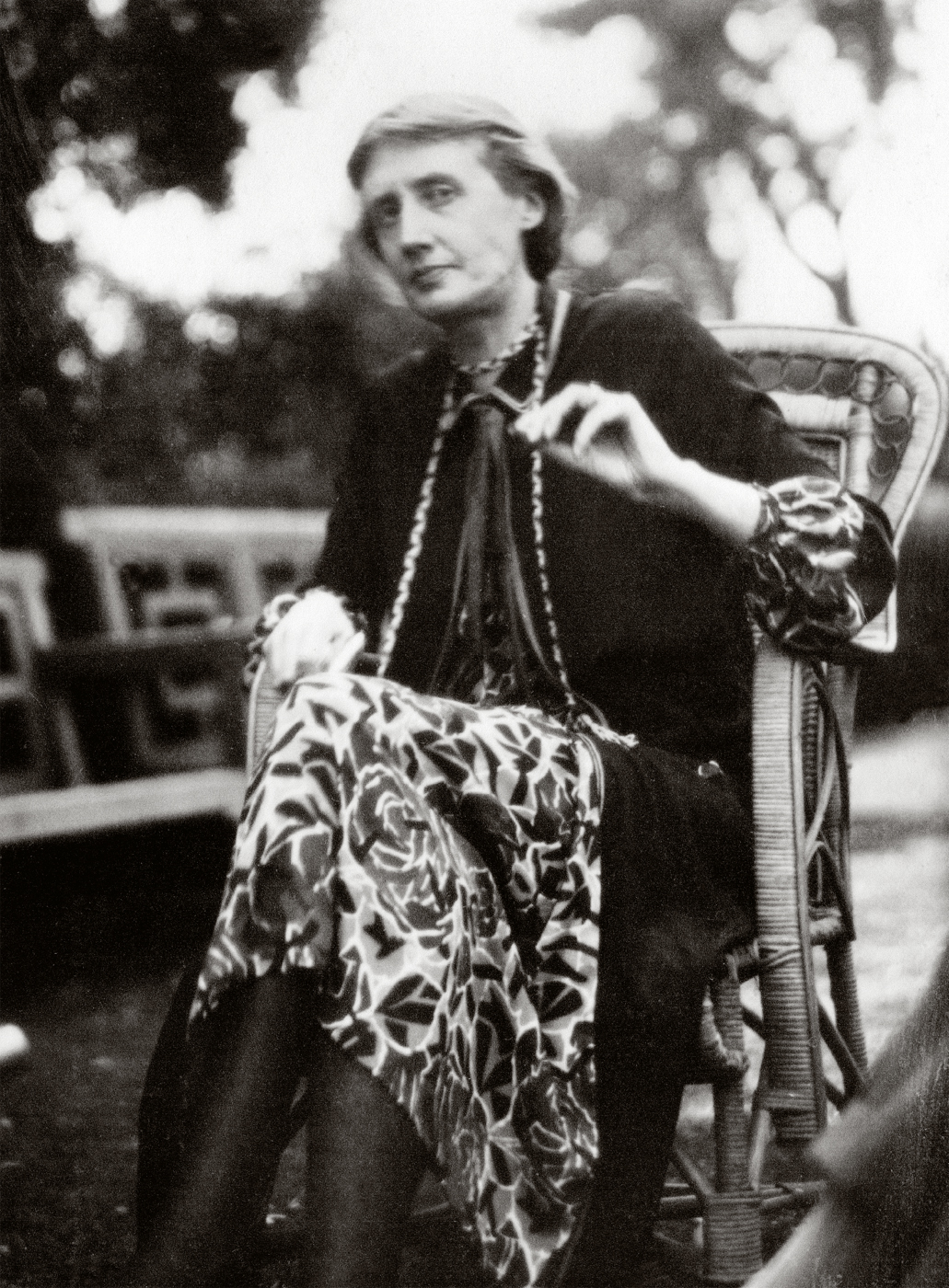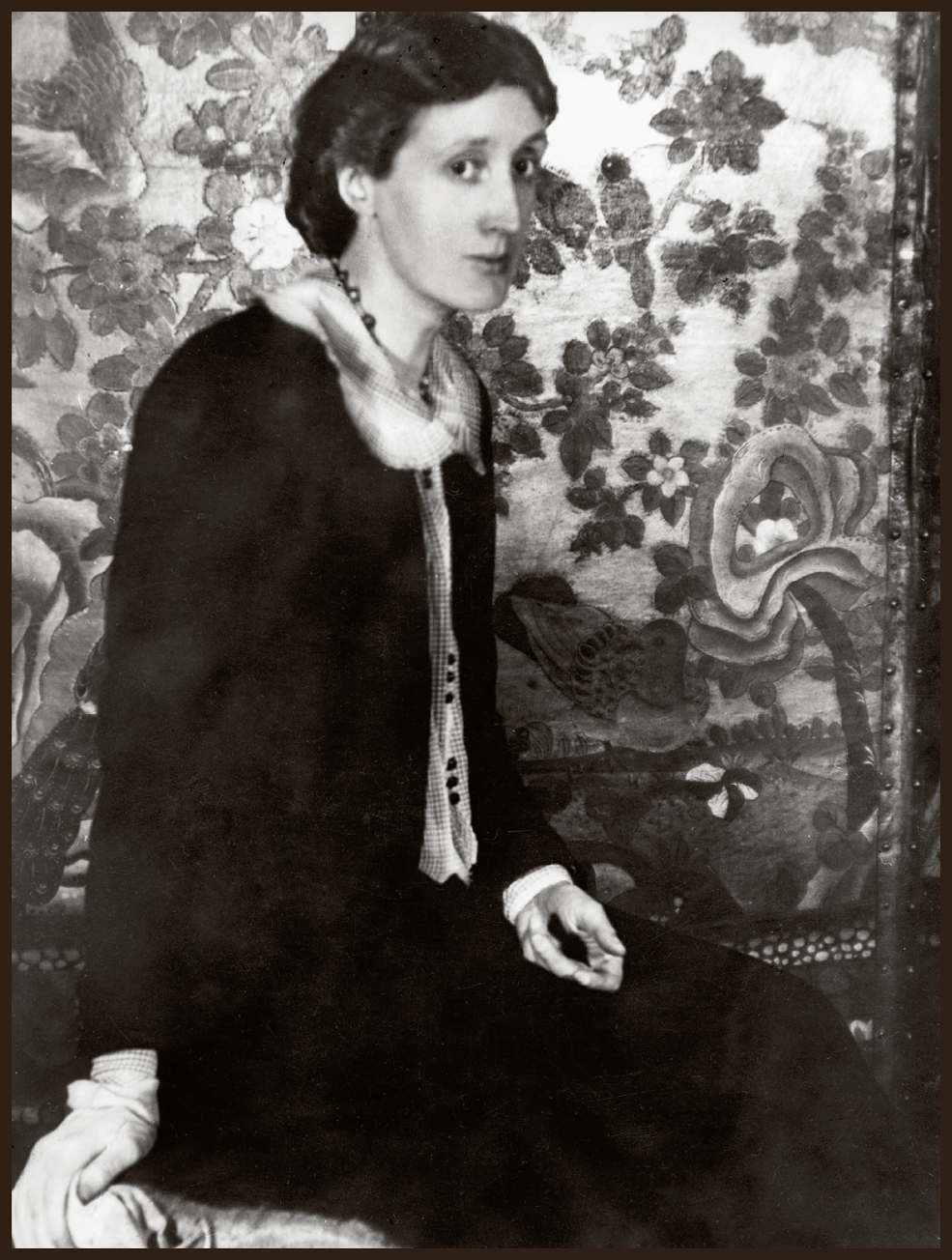Vain trifles as they seem, clothes have, they say, more important offices than merely to keep us warm. They change our view of the world and the world’s view of us.
—Virginia Woolf, Orlando, 1925
Virginia Woolf’s writing often slipped in and out of the reality of the immediate world around her characters. She was a modernist author, alert to interior voice, which she assimilated into her novels with truth-telling literary evolution that was fresh and original. She explained and annotated her characters’ thoughts with a fluent and eloquent logic. For a writer so attuned to stream-of-consciousness thought, she was at times petrified, absorbed, and careless of her own external appearance. It was an odd clash: to be so understanding and articulate with emotion and concept and yet personally shrink from the easy communication of clothes. They were, however, something that fascinated her.
Although she had her hair shingled, à la a flapper, in 1927, Woolf was usually to be seen with a Christina Rossetti–style bun tied messily at the nape of her neck. Long cardigans were a security for her and became a signature, swathed around her shoulders. She epitomizes the look of the Bloomsbury set—uninhibited elegance that has become synonymous with a nonchalant, nonfussy, fluid approach to dressing. She mixed and matched sweaters and gardening skirts, printed tea dresses and fur shrugs, buckled shoes and shawls: an eccentric synthesis that preceded Prada’s geek chic by seventy years or so. Her clever, idiosyncratic wardrobe suited her perfectly: graceful and willowy, her outfits hung naturally—she was a tall, birdlike creature with, Edith Sitwell observed, “thoughtful eyes.” But however much Woolf acquiesced to the flowing charms of her intellectual dress, she was captivated by the lure of couture and the concept of fashion. According to Recollections of Virginia Woolf by Her Contemporaries, when the Vogue fashion editor, Madge Garland, first set eyes on Woolf she noted that “she appeared to be wearing an upturned wastepaper basket on her head. There sat this beautiful and distinguished woman wearing what could only be described as a wastepaper basket.”

Getty Images: Adoc-Photos
Virginia Woolf, 1926.
Now, where was her dress?
Her evening dresses hung in the cupboard. Clarissa, plunging her hand into the softness, gently detached the green dress and carried it to the window. She had torn it. Someone had trod on the skirt. She had felt it give at the Embassy party at the top among the folds. By artificial light the green shone, but lost its color now in the sun. She would mend it. Her maids had too much to do. She would wear it tonight. She would take her silks, her scissors, her—what was it?—her thimble, of course, down into the drawing-room, for she must also write, and see that things generally were more or less in order. . . .
And then this dress of hers—where was the tear? and now her needle to be threaded. This was a favorite dress, one of Sally Parker’s, the last almost she ever made, alas, for Sally had now retired, living at Ealing, and if ever I have a moment, thought Clarissa (but never would she have a moment any more), I shall go and see her at Ealing. For she was a character, thought Clarissa, a real artist. She thought of little out-of-the-way things; yet her dresses were never queer. You could wear them at Hatfield; at Buckingham Palace. She had worn them at Hatfield; at Buckingham Palace.
—Virginia Woolf, Mrs. Dalloway, 1925
When Woolf was newly married to her husband, the writer Leonard Woolf, she mistakenly cooked her wedding ring into a suet pudding.
Woolf’s nickname was Goat because she was playfully impish as a child. Her sister Vanessa Bell would send letters to her addressed to “Billy” (the goat).
In 1910 Woolf dressed up as a male member of the Ethiopian royalty and along with other members of the Bloomsbury set, hoaxed the Royal Navy into showing them around the Dreadnought battleship as visiting dignitaries.
Mrs. Dalloway, Woolf’s fourth novel, published in 1925, is a literary tapestry of love, memory, and illness. Woolf deliberately uses the conduit of dress to symbolize moments in time and layers of experience. In a diary entry from the same year, she explained her approach: “My present reflection is that people have any number of states of consciousness: and I should like to investigate the party consciousness, the frock consciousness.”
Woolf’s “frock consciousness” method is a weaving thread throughout Mrs. Dalloway that sparks recall for Clarissa, who is giving a party. The plot takes place over the passage of a day and winds around the lives of the host with that of Septimus Smith, a World War I veteran suffering from shell shock. Mrs. Dalloway sits and mends her favorite green dress, memories drifting over her. She remembers moments that have come to define her and her present circumstances, and these moments hold her soul together.

Getty Images: TIME Life Pictures Ullstein bild
Virginia Woolf, 1930.
Woolf wrote for British Vogue in the 1920s—at this time it was under the watch of its second-ever editor, Dorothy Todd. She had transformed it into a publication that offered an avant-garde twist to the world of women’s magazines, featuring contributors such as Gertrude Stein and Parisian catwalk reports from the likes of novelist and philosopher Aldous Huxley. Todd asked Woolf to do a shoot for Vogue with their foremost photographers, Maurice Beck and Helen Macgregor, and she did so wearing her mother’s Victorian dress. In typical Woolf style, it was both a cerebral and a sartorial statement. The dress did not fit well and was most definitely out of date—an unabashed remembrance of times past that flew in the face of fashion and invoked celebrated memories.

I must remember to write about my clothes next time I have an impulse to write. My love of clothes interests me profoundly: only it is not love; & what it is I must discover.
—Virginia Woolf, The Diary of Virginia Woolf, 1925